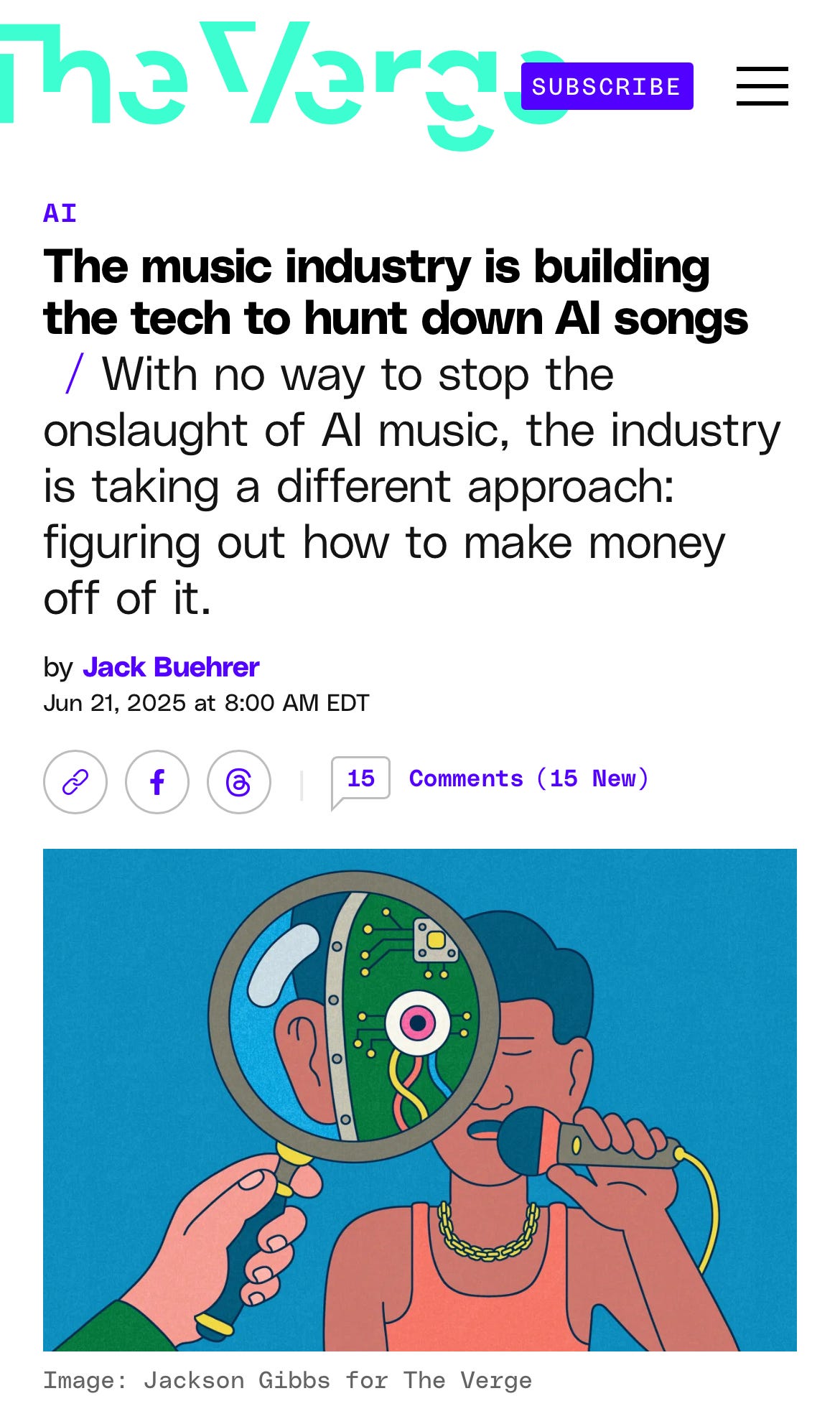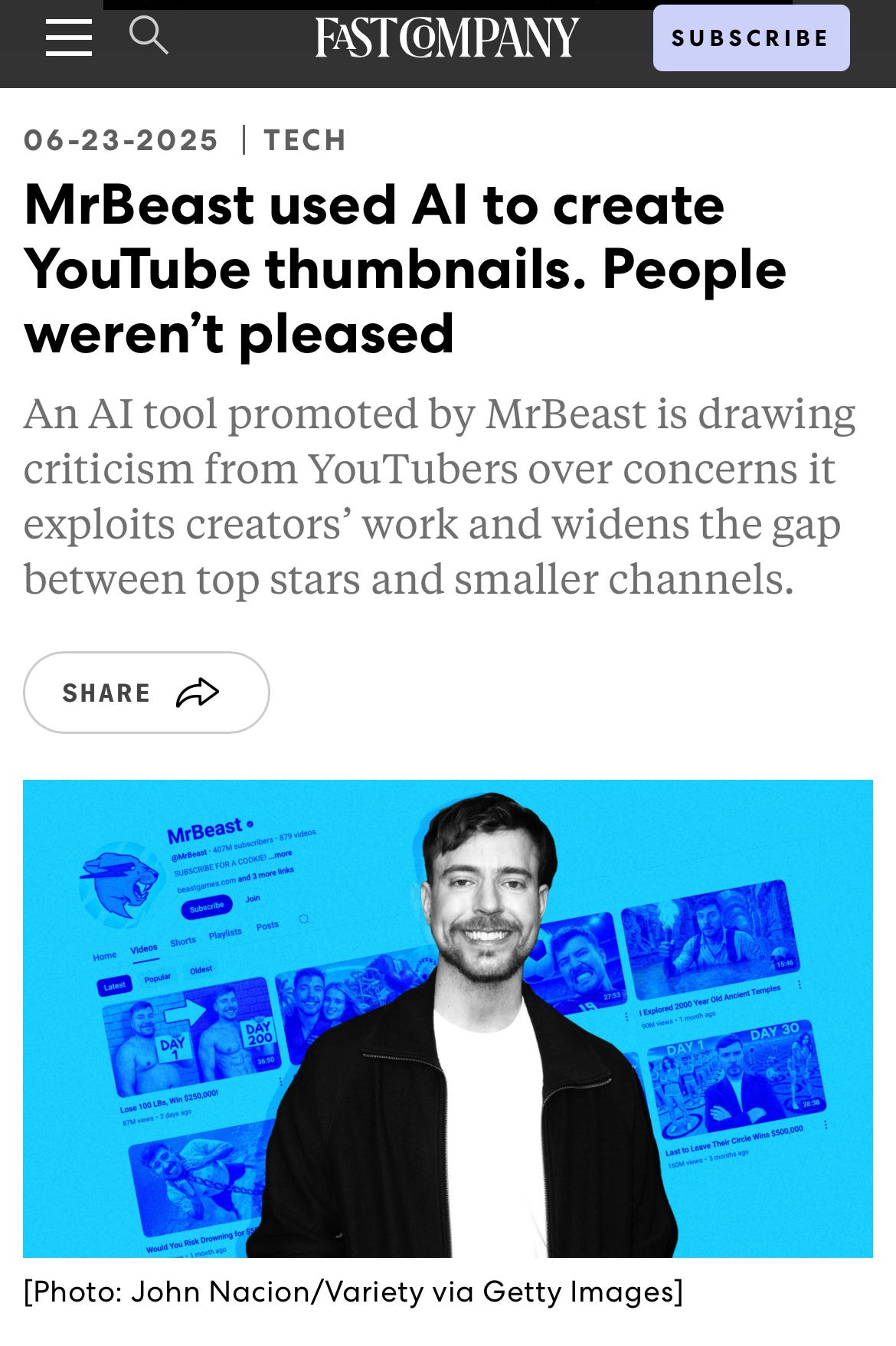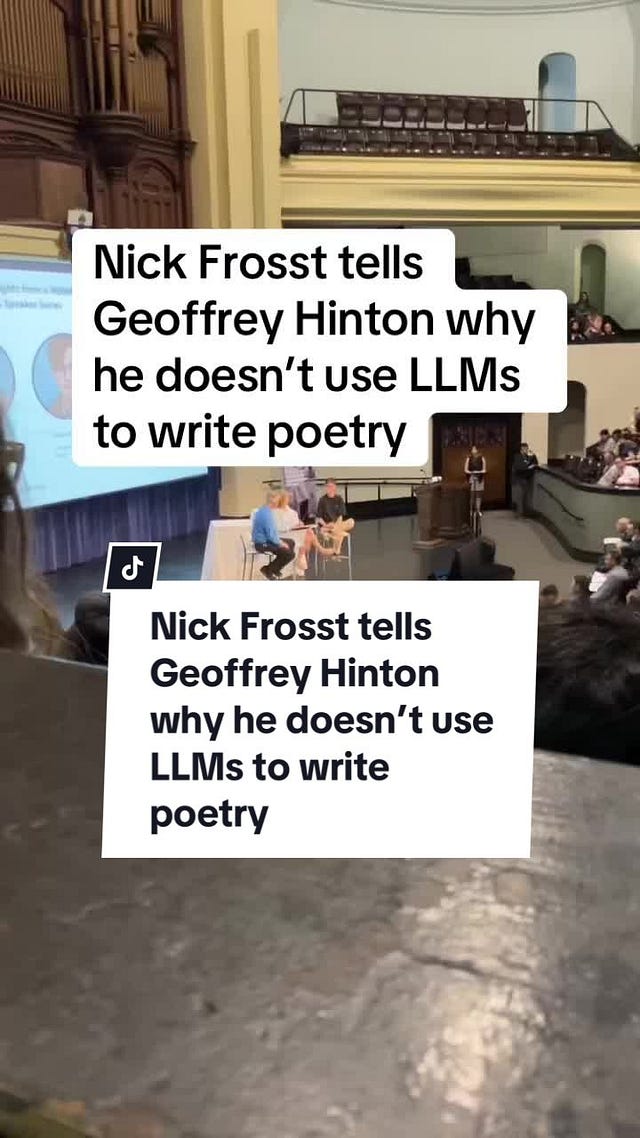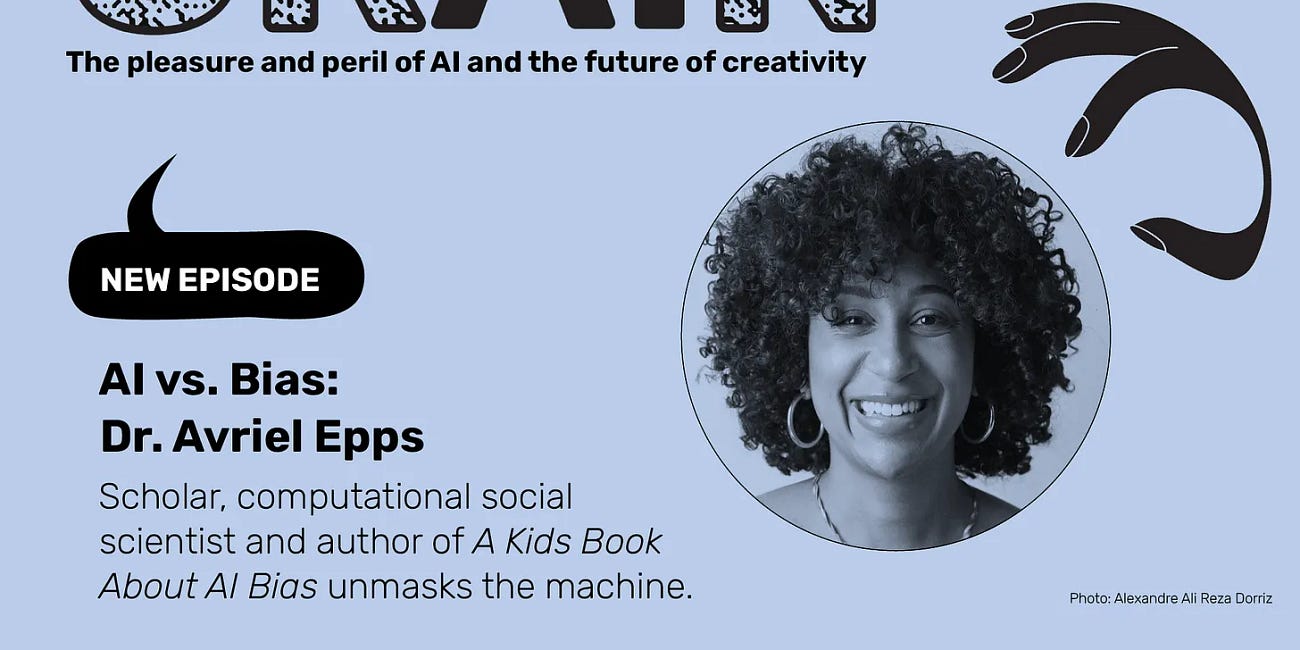Hi! I’m Ronit Novak and welcome to the new weekly newsletter from THE GRAIN—featuring five newsworthy items about the future of creativity, the latest from my ongoing interview series, and more grains of thought about the pleasure and peril of AI. Subscribe to THE GRAIN here on Substack along with wherever else you get your podcasts, and follow me on LinkedIn, Instagram and TikTok.
1. Racing against innovation
Midjourney’s blog post said that from a technical standpoint, the new video model “is a stepping stone, but for now, we had to figure out what to actually concretely give to you.” The company is calling the current video workflow “Image-to-Video,” meaning that you still make images in Midjourney but now you can press an “Animate” button to turn them into video clips. According to Midjourney, there’s an “automatic” animation setting as well as a “manual” animation setting that lets you “describe to the system how you want things to move and the scene to develop.”… The company also is allowing users to animate images “uploaded from outside of Midjourney.” To do this, users can drag an image to the prompt bar and mark it as a “start frame,” then type a motion prompt to describe how they want it to be animated.
Inside Disney’s campaign to protect Darth Vader from AI [Bloomberg News]
2. Two levels to book case
A trio of writers—Andrea Bartz, Charles Graeber and Kirk Wallace Johnson—alleged in their lawsuit last summer that Anthropic’s practices amounted to “large-scale theft,” and that the San Francisco-based company “seeks to profit from strip-mining the human expression and ingenuity behind each one of those works.”… Anthropic said Tuesday it was pleased that the judge recognized that AI training was transformative and consistent with “copyright’s purpose in enabling creativity and fostering scientific progress.” Its statement didn’t address the piracy claims.
Anthropic wins ruling on AI training in copyright lawsuit but must face trial on pirated books [Associated Press]
3. The tech to tag the tunes
In the scramble to respond, a new category of infrastructure is quietly taking shape that’s built not to stop generative music outright, but to make it traceable. Detection systems are being embedded across the entire music pipeline: in the tools used to train models, the platforms where songs are uploaded, the databases that license rights, and the algorithms that shape discovery. The goal isn’t just to catch synthetic content after the fact. It’s to identify it early, tag it with metadata, and govern how it moves through the system.
4. Working towards an AI world
If we want to know what these new opportunities will be, we should start by looking at where new jobs can bridge the gap between AI’s phenomenal capabilities and our very human needs and desires. It’s not just a question of where humans want AI, but also: Where does AI want humans? To my mind, there are three major areas where humans either are, or will soon be, more necessary than ever: trust, integration and taste.
AI might take your job. Here are 22 more it could give you [New York Times]
5. Backlash for this money machine
“What’s caused this backlash isn’t just the tool, it’s what it represents,” agrees Dom Smales, cofounder of GloMotion Studios, a digital entertainment studio and longstanding voice in the YouTube space. “When the most powerful creator on the platform automates creativity using other creators’ work, it hits a nerve. It further exposes the growing gap between mega-creators and everyone else, which has to be handled carefully as this is a community above everything else.”
Watch my grain of thought on this story [@thegrain.ai/TikTok]
THE GRAIN at Toronto Tech Week
For more on the pleasure and peril of AI and the future of creativity, subscribe to THE GRAIN wherever you get your podcasts, and follow me for more on LinkedIn, Instagram and TikTok. Questions or comments? ronit@thegrain.ai.












